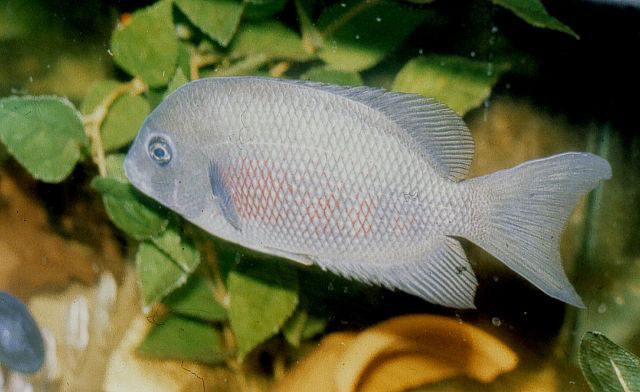| Cichlidae (Cichlids), subfamily: Etroplinae |
| 18.68 cm SL (male/unsexed) |
|
benthopelagic; freshwater |
| Africa: Lake Kinkony and Mahavavy Sud River in Madagascar (Ref. 78623, 117174). |
|
Dorsal spines (total): 16-18; Dorsal soft rays (total): 17-19; Anal spines: 8-10; Anal soft rays: 13-15. Diagnosis: A member of the deep-bodied clade of Paretroplus and distinguished from congeners, in preservative, by pale yellow to golden body colouration in combination with a series of six or seven faint to barely discernable, particularly in adults, vertical, dark-olive bars on the flank, and in the possession of uniform gray or charcoal-gray unpaired fins; in life, P. dambabe is unique among congeners in the possession of a grayish to bluish-green base colouration, which is accompanied by a highly variable amount of bright red pigmentation on the flank, particularly below the upper branch of the lateral line (Ref. 78623). Paretroplus dambabe is further distinguished from P. petiti, a species with which it has been erroneously associated for decades, by overall colouration, light yellowish olive vs. dark brown; brownish spotting, reddish in life, on the flanks in preservative, particularly anteriorly and below the lateral midline; and a shallower body, 48.3-57.1% of standard length vs. 57.9% (Ref. 78623). |
|
|
Critically Endangered (CR); Date assessed: 24 June 2016 (B1ab(iii,v)) Ref. (130435)
|
| harmless |
Source and more info: www.fishbase.org. For personal, classroom, and other internal use only. Not for publication.

